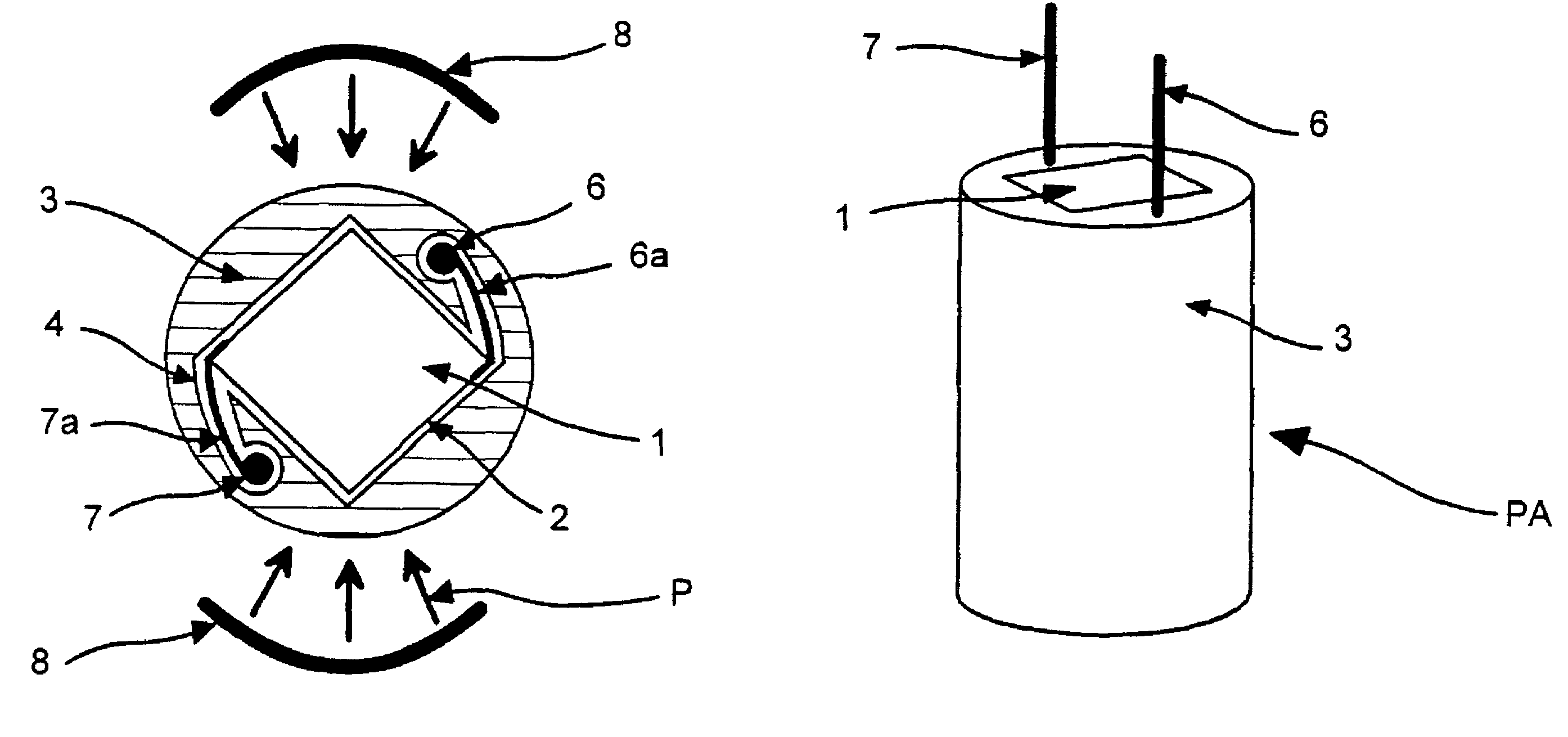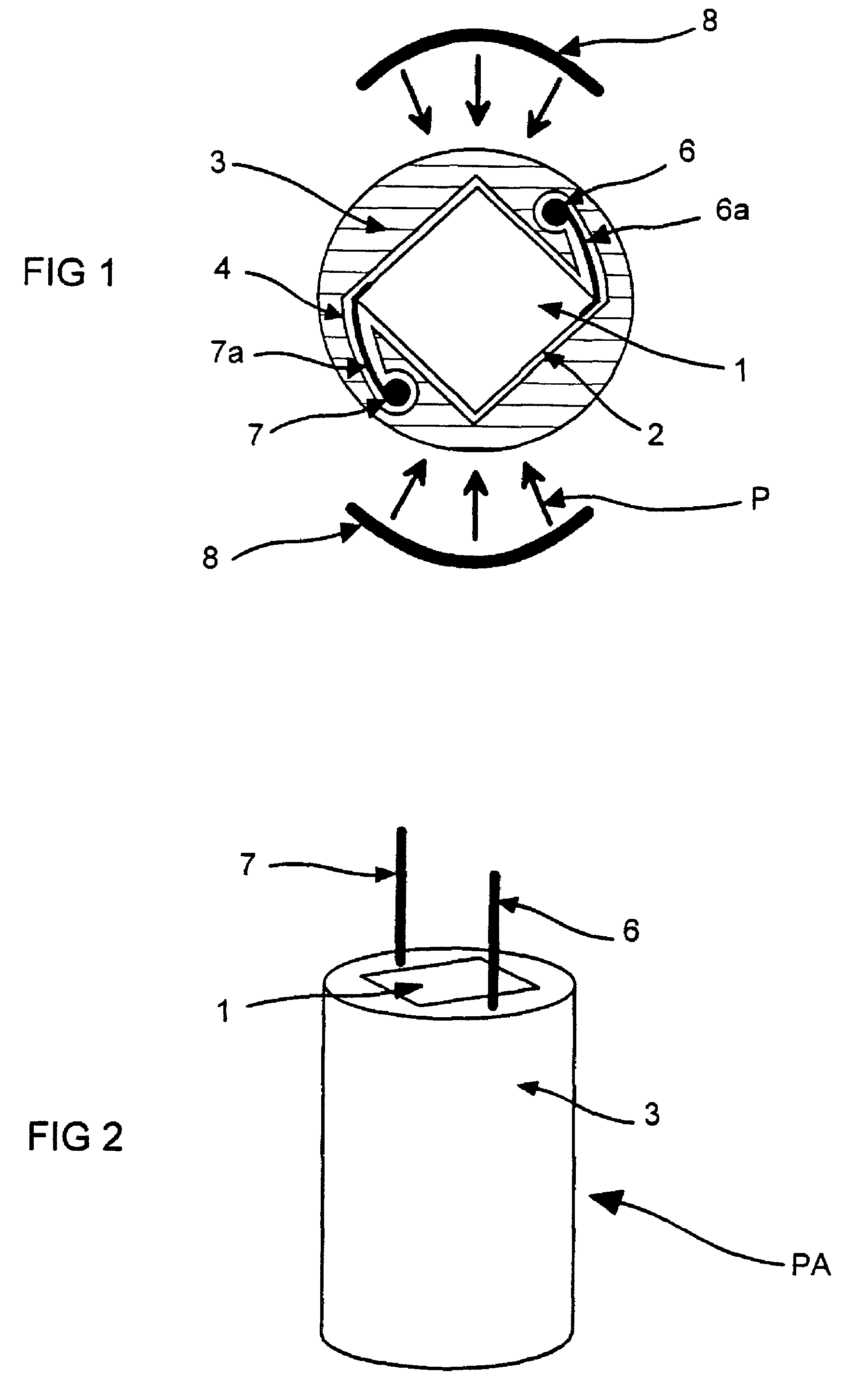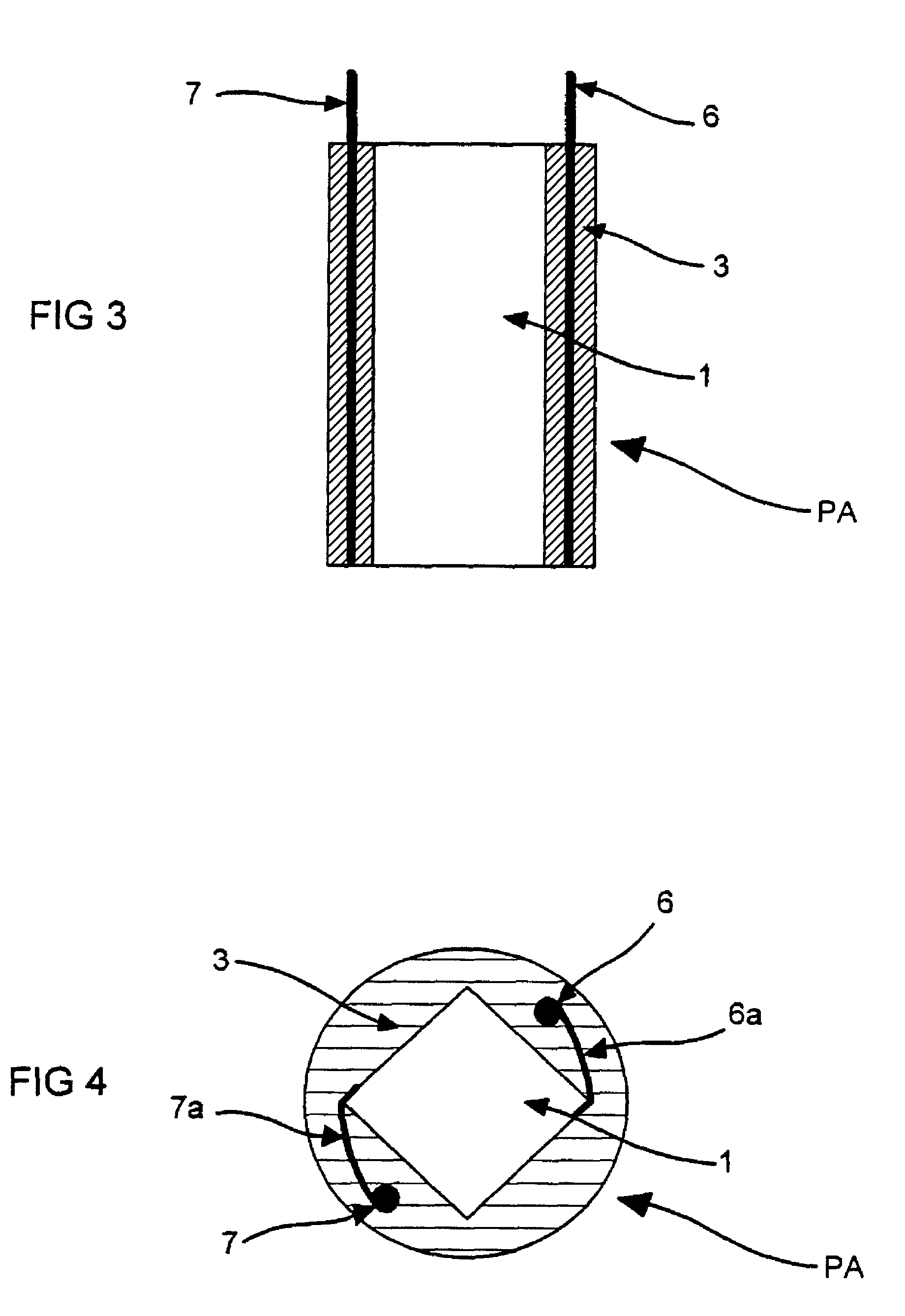Method for producing an electronic or electrical component with a plastic-passivated surface
- Summary
- Abstract
- Description
- Claims
- Application Information
AI Technical Summary
Benefits of technology
Problems solved by technology
Method used
Image
Examples
Embodiment Construction
[0062]The piezoactuator arrangement PA (see FIG. 2) consists of a piezoactuator 1, which is connected via contact lugs 6a and 7a and to electrical terminals 6 and 7, as well as a plastic body 3 (see FIG. 1).
[0063]The piezoactuator arrangement PA is produced in two subprocesses. In a first step, the plastic body 3 is preproduced in a molding process. In the second step, the passivation and simultaneous encapsulation of the piezoactuator with its electrical terminals occur. The same device is used in the preproduction of the plastic body and the passivation of the actuator.
[0064]The plastic body 3 is produced in an injection molding process, for example. As another essential feature, besides a drain opening for excess plastic material, the device used comprises the shape of the surface 2 of the actuator 1. A plastic body 3 with a hollow space 5 (see FIG. 7) is thereby obtained in the molding process, the inner surface 4 of which comprises the surface 2 of the actuator 1, in inverse fo...
PUM
| Property | Measurement | Unit |
|---|---|---|
| Pressure | aaaaa | aaaaa |
| Viscosity | aaaaa | aaaaa |
| Adhesion strength | aaaaa | aaaaa |
Abstract
Description
Claims
Application Information
 Login to View More
Login to View More - R&D
- Intellectual Property
- Life Sciences
- Materials
- Tech Scout
- Unparalleled Data Quality
- Higher Quality Content
- 60% Fewer Hallucinations
Browse by: Latest US Patents, China's latest patents, Technical Efficacy Thesaurus, Application Domain, Technology Topic, Popular Technical Reports.
© 2025 PatSnap. All rights reserved.Legal|Privacy policy|Modern Slavery Act Transparency Statement|Sitemap|About US| Contact US: help@patsnap.com



